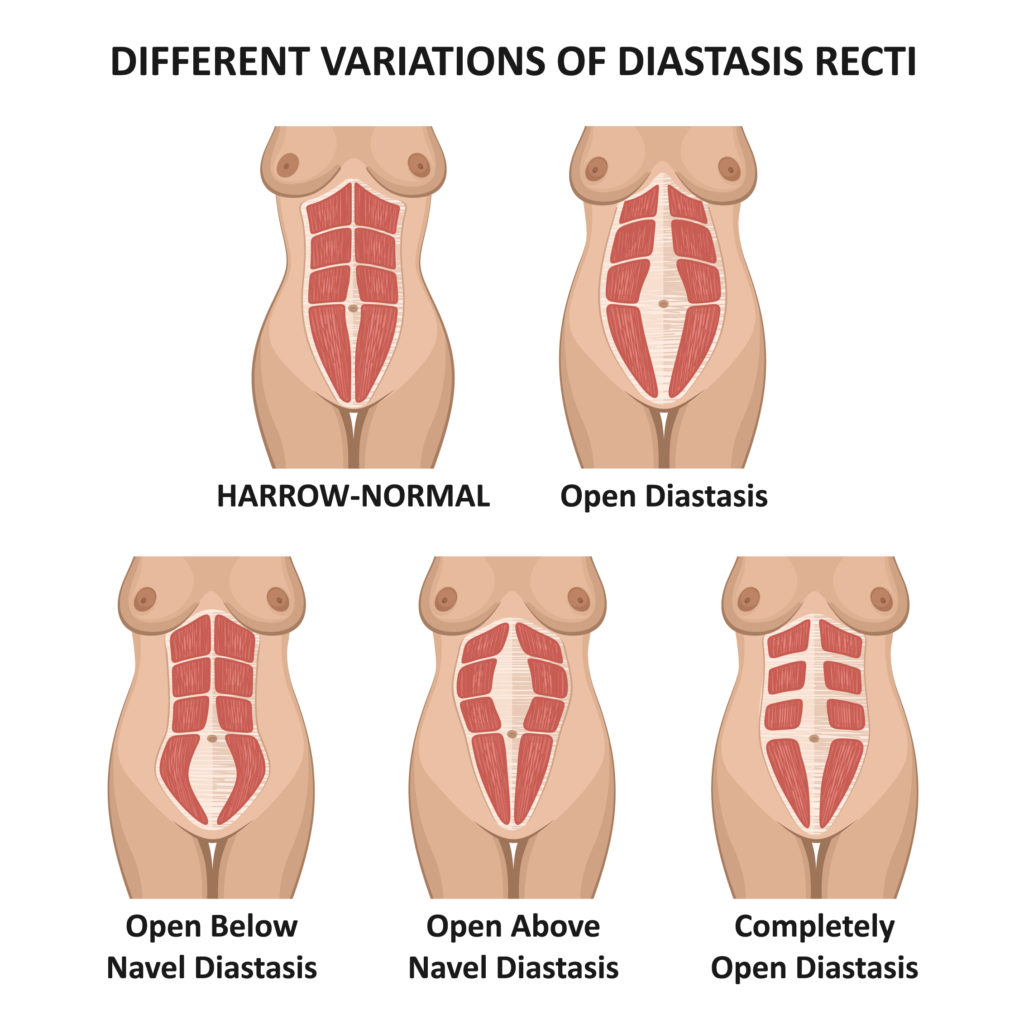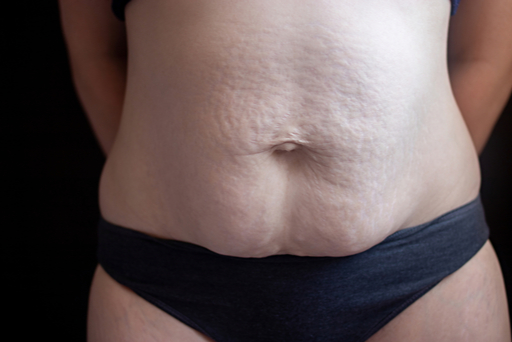The Postpartum Body No One Tells You About
Have you ever heard the term Diastasis Recti? It’s when your abdominal muscles separate to allow room for baby to grow. About two thirds of women experience it during pregnancy, but half of women continue to struggle with it postpartum. Only no one talks about it, or why it might be a problem.
After my daughter was born, I allowed myself two weeks grace. Two weeks of not worrying about chores, or what I ate, or even thinking about getting my body back in shape. Those two weeks were only for bonding, establishing breastfeeding, and basic survival.
It took way longer than two weeks, but when I eventually started working out, I returned to my favorite workout videos. They were heavy in abdominal exercises, and I was eager to get rid of the mama pooch. My belly bulged out and I still looked five months pregnant. So, I did my crunches and planks. What I didn’t know was that those exercises were dangerous for me and we’re actually hurting my body!
I had diastasis recti, a separation in my abdominal muscles that hadn’t healed or resolved on its own after giving birth. I had no idea this was even a thing, or that the ab exercises I was doing were actually worsening that separation! We’ve all heard how important core strength is. When you have a gap in your abdominal muscles, you have very little core strength. This can lead to so many problems including not just back pain and a bulging tummy, but also incontinence and sexual dysfunction. Because a weak core can often mean a weak pelvic floor.
So what exactly is it, why does it happen, can it be prevented, how do you know if you have it, and what can be done to fix it?
What is Diastasis Recti?
Very simply, diastasis recti is a gap between the abdominal muscles. This causes the belly to bulge out in the middle. In extreme cases, the internal organs can also protrude through the gap. This is called a hernia.

More specifically, the abdominal muscles are held together by connective tissue called the linea alba. During pregnancy, hormones allow this connective tissue to stretch, to accomodate the pressure created by the uterus expanding as baby grows. This is very common during pregnancy. After the baby is born and hormone levels return to normal, the thinning improves. But like a stretched out rubberband, sometimes the tissue doesn’t snap back, leaving a gap.
This can happen to anyone, but there are some women who are more at risk. The risk of DR increases with each additional pregnancy. Other risk factors include being over the age of 35, carrying multiples in one pregnancy, being petite, or having poor muscle tone. Also, having DR in a previous pregnancy increases the risk of it occuring with future pregnancies.
But it’s not just the abdominals.
The other issue with diastasis recti is that it is often linked with a weak pelvic floor. Urinary incontinece is a commonly accepted postpartum issue. We joke about peeing a little when we cough, sneeze, or laugh. But this is actually due to a weak pelvic floor, and is both preventable and curable. Other issues that may arise from a weak pelvic floor are sexual dysfunction, painful intercourse, reduced vaginal sensation, constipation, low back pain, and pelvic pressure, just to name a few.
Prevention is possible
The most important thing you can do to prevent DR is to protect your abs while pregnant. This means avoiding any kind of jack-knife motion, kind of like a sit-up. Not that you’re doing sit-ups while pregnant (don’t do that!) but think about how you get out of bed or up off of the couch. You generally engage your abs and bend. That puts too much pressure on a stretched core. Instead, try the log roll manuever. Roll on to your side and use your arms to push you up.
Also, there are exercises you can do while pregnant to strengthen your core and pelvic floor. (Again, not sit-ups!) Not only will this help to prevent DR, but it will also help with labor and delivery. A strong core and strong pelvic floor allow for more effective pushing.
You’ve probably been told to do your kegels during pregnancy. That’s to strengthen your pelvic floor. But there are so many more options than kegels. Squats, bird dog, bridges, and leg lifts are just a few. These, of course, will all become more difficult as the pregnancy progresses.
Check yourself for Diastasis Recti
But what if you’re already past the prevention stage. How do you know if you have diastasis recti?
It’s actually very easy to check yourself at home. Get down on the floor (use the log roll!) and lay on your back. Bend your knees with your feet flat on the floor. Place your fingers just above your belly button and apply gentle pressure. With fingers in place, lift your head and neck off the floor, like a mini crunch. Try to feel the edges of your abdominal muscles. DR gaps are measured in finger widths, so how many fingers fit in to the gap between your abs? Lower your head back down. Try not to hold that position for too long. Just lift for a second to feel and then put your head down. You can repeat this motion a few times to get a clear idea, but quicky. Do not hold that mini crunch.
Move your fingers higher up on your abdomen and repeat the check. Then move your fingers below your belly button and check again.
A gap of 1 finger is fairly mild, 2-3 fingers is more moderate, and 4 fingers is pretty significant. You can have a separation above the belly button, below, or both.
How to fix it
Some people will tell you that DR can not be fixed. Depending on the severity, you may be told that it can only be fixed with surgery, namely a tummy tuck. A pelvic physiotherapist is one option for seeking help. But, I think there is a better way.
Once I finally realized that I had DR, I went on a googling frenzy. I discovered the MUTU system, by Wendy Powell. Wendy is an expert in maternal physical recovery. She created the MUTU system to help women prevent and/or fix diastasis recti. Her proven system is recommended by medical professionals the world over, and is entirely online. This means you can fix your DR on your own time, from the privacy of your home. And, it happens to be a fraction of the price of a pelvic physiotherapist or a tummy tuck, and also way less invasive.
It also works, is not a huge time commitment and is super simple to add in to your life. This program has literally changed my life. I tell everyone about it and have recommended it time and time again. It’s no exaggeration when I say MUTU changed my life.
The Takeaway
Diastasis recti is a very common but potentially difficult problem that occurs in pregnancy and postpartum. Abdominal separation is so much more than vanity. It has very significant health consequences. But protecting you abs and strengthening your core during pregnancy can help to prevent it. And if baby is already here, it’s very simple to check yourself at home for any separation. Diastasis recti can be fixed through specific exercises, either with the help of a pelvic physiotherapist or a comprehensive program such as the MUTU system. It is not something that you just have to accept.
Diastasis recti is both preventable and curable! You can get rid of that bulging belly. You do not need to worry about leaking when you cough, sneeze, or laugh. There is no reason to endure painful or unenjoyable sex. Take control, so you can live your best life!
What has your experience with diastasis recti been? Let me know in the comments!



